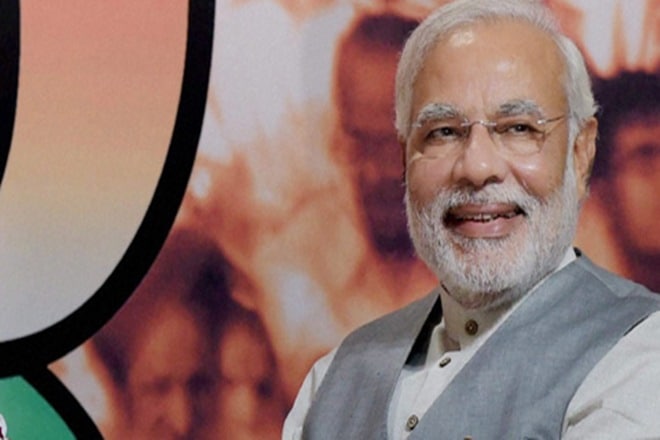Prime Minister Narendra Modi during Uttar Pradesh Assembly Elections had emphasized that BJP governments in Centre and in states will focus on farmers. He also had promised to waive off farmers’ loans if BJP was voted to power. After getting historic mandate in Uttar Pradesh, the Centre has decided to expedite the implementation of the direct benefit transfer (DBT) system for payment of fertilizer subsidy to farmers, according to The Indian Express.
Key details
According to The Indian Express report, from the coming kharif season, beginning June, the Rs 70,000-crore fertiliser subsidy budgeted for 2017-18 will be disbursed to companies based on actual sales to farmers captured on point-of-sale (POS) machines installed at nearly two lakh retail points across India. This would be a significant change from the current system, where firms are paid the subsidy on receipt of their fertiliser at the railhead point or any approved godown of a district. Prior to this, till October 2012, they were getting the subsidy on despatch of material from their respective factories.
Watch this video
The proposed subsidy-post-sale system — as opposed to after receipt-at-district or despatch-from-plant — is already being implemented as a pilot scheme in 17 districts. They include UP Chief Minister Yogi Adityanath’s home district of Gorakhpur; Kishanganj and Begusarai (Bihar); Dhanbad (Jharkhand); Hoshangabad (Madhya Pradesh); Pali (Rajasthan); Nashik and Raigad (Maharashtra); Narmada (Gujarat); Krishna and West Godavari (Andhra Pradesh); Ranga Reddy (Telangana); Tumkur (Karnataka); Thrissur (Kerala); Karnal and Kurukshetra (Haryana); and, Una (Himachal Pradesh).
“We will have a nationwide roll-out of this system from June 1. Fertiliser companies have been given a deadline of May 31 for procurement and installation of POS machines at all the 1.98 lakh-odd registered outlets selling to farmers. All transactions thereafter will have to be done through POS machines in order to be able to claim subsidy,” the official said.
Watch this video
The proposed system’s biggest advantage is that it can track actual purchases by the final buyer. A farmer growing wheat or paddy may apply up to three 50-kg bags of urea, one bag of di-ammonium phosphate (DAP) and half-a-bag of muriate of potash (MOP) per acre. That requirement could be more — say, three bags urea and 1.5 bags each of DAP and MOP per acre — for potato and sugarcane.
But under the new system, it is possible to recorded transactions at individual farmer-level. If someone is buying 200 bags of urea, that person is more likely to be a plywood or particle board manufacturer than a farmer. Either way, he isn’t deserving of subsidy.
Background
Earlier, the Narendra Modi government had promised to clear fertiliser subsidy arrears, estimated at about Rs 40,000 crore at the earliest and also increase the fixed cost of urea in order to strengthen the industry. With banks flushed with money after demonetisation of Rs 500 and Rs 1,000 notes, Fertiliser Minister Ananth Kumar said the government was looking at providing loans to the industry at a reasonable rate through special banking arrangement. “During our tenure, we want to make subsidy backlog zero… It (subsidy arrears) has become a huge burden,” Kumar said while addressing the annual seminar of Fertiliser Association of India (FAI).
Fertiliser manufacturers have to incur an additional interest cost of Rs 4,000 crore per annum due to delay in subsidy payment by the government. The government had allocated around Rs 70,000 crore in this years budget for payment of fertiliser subsidy and the same has already been exhausted.
Public Distribution System (PDS) & Direct Benefit Transfer (DBT) system
In Public Distribution System (PDS), the minister said DBT is being implemented in two ways: cash transfer of food subsidy into bank accounts of beneficiaries and DBT in-kind means automation of fair price shops. To a separate query on DBT in fertilisers, Minister of State for Fertiliser Mansukh L Mandaviya had said, “The government has decided to introduce DBT system for fertilizer subsidy payments. Under the proposed system, 100 per cent subsidy on various fertilizer grades shall be released to the manufacturers and importers on the basis of actual sales made by the retailer to the beneficiaries.”
Noting that the DBT being implemented in fertilizer subsidy payment is slightly different from the normal DBT being implemented in LPG subsidy, the minister had explained, “Under the DBT in fertilizer sector, the subsidy will be released to the fertilizer companies instead of beneficiaries, after the sale is made by the retailers to the beneficiaries on submission of claims generated in the web-based online Integrated Fertilizer Monitoring System (iFMS) by fertilizer companies.”
After implementation of DBT, it is expected that diversion/smuggling of fertilizers will be reduced to a large extent and the government will save subsidy to that extent.
(With agency inputs)

